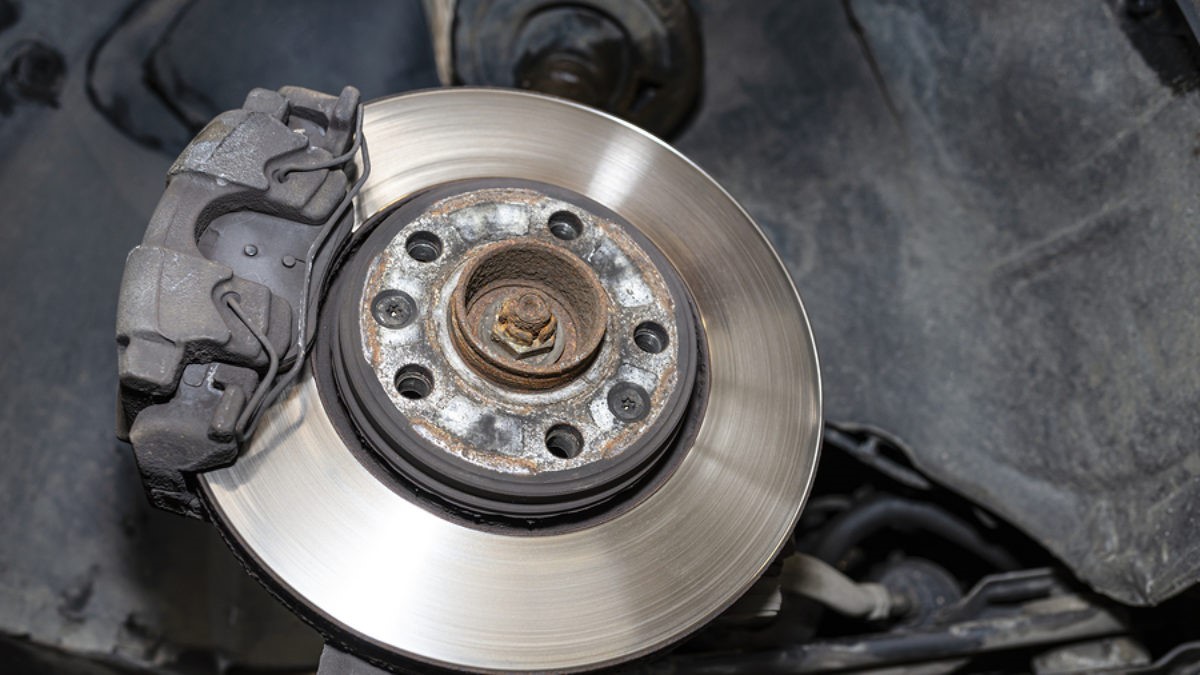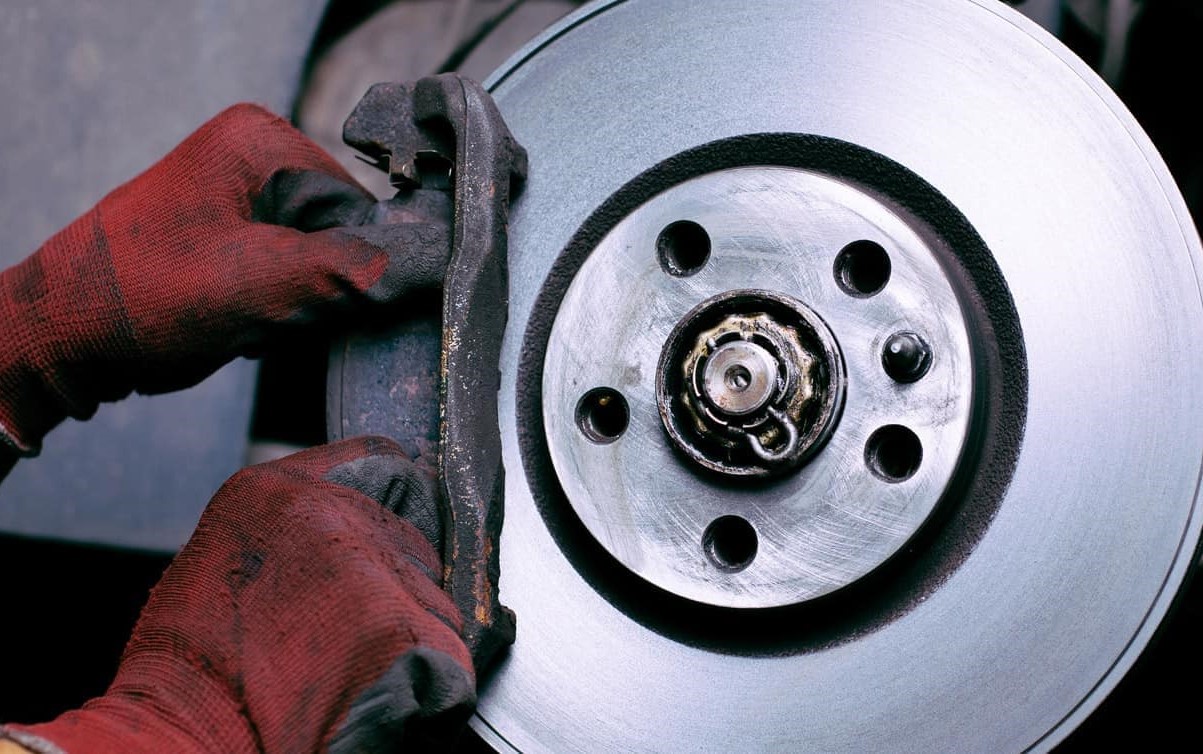Home>Automotive>Brake Pedal Plunges To The Floor: A Troubling Sign You Can’t Ignore


Automotive
Brake Pedal Plunges To The Floor: A Troubling Sign You Can’t Ignore
Published: January 8, 2024
Experiencing a brake pedal that plunges to the floor? Learn why it's a concerning issue in automotive safety that demands immediate attention.
(Many of the links in this article redirect to a specific reviewed product. Your purchase of these products through affiliate links helps to generate commission for Noodls.com, at no extra cost. Learn more)
Table of Contents
Introduction
When it comes to vehicle safety, few components are as crucial as the braking system. The brake pedal serves as the primary interface between the driver and the vehicle's ability to slow down or come to a complete stop. It is a mechanism that instills a sense of control and security, allowing drivers to navigate roads with confidence. However, encountering a situation where the brake pedal suddenly plunges to the floor can be a disconcerting and alarming experience.
The brake pedal, a fundamental element of a vehicle's braking system, is designed to transmit the force applied by the driver's foot to the brake pads or shoes, resulting in the deceleration or halting of the vehicle. When this essential component unexpectedly loses its firmness and sinks to the floor with minimal resistance, it signifies a potential malfunction within the braking system. This unsettling occurrence can trigger a cascade of concerns and apprehension for any driver, as it directly compromises the vehicle's ability to stop effectively.
Understanding the significance of a brake pedal plunging to the floor involves recognizing the pivotal role it plays in ensuring safe and reliable vehicle operation. This issue not only poses a direct threat to the driver and passengers but also endangers other road users and pedestrians. Therefore, addressing this matter promptly and comprehensively is imperative to maintain the integrity of the vehicle's braking system and uphold road safety standards.
In the subsequent sections, we will delve into the intricacies of the brake pedal, explore the potential causes behind its sudden descent to the floor, examine the associated signs and symptoms, and emphasize the critical importance of promptly addressing this concerning issue. By gaining a comprehensive understanding of these aspects, drivers can equip themselves with the knowledge and awareness necessary to navigate the roads with confidence and ensure the safety of all those sharing the thoroughfare.
Read more: 5 Signs A Wendigo Is Hunting You
Understanding the Brake Pedal
The brake pedal is a fundamental component of a vehicle's braking system, serving as the primary interface between the driver and the vehicle's ability to slow down or come to a complete stop. It is a pivotal link in the chain of mechanisms responsible for converting the driver's input into the necessary force to decelerate or halt the vehicle. When the driver applies pressure to the brake pedal, this force is transmitted through the brake fluid to the brake calipers or wheel cylinders, subsequently engaging the brake pads or shoes against the rotors or drums to generate the friction needed for deceleration.
The brake pedal's design encompasses both form and function, featuring a sturdy and ergonomic structure that facilitates intuitive operation. Its positioning within the vehicle's interior is strategically optimized for accessibility, allowing drivers to seamlessly transition between accelerating and braking. Furthermore, the pedal's responsiveness is finely tuned to provide tactile feedback, enabling drivers to gauge the amount of force required for effective braking.
In addition to its mechanical significance, the brake pedal embodies a critical aspect of vehicle safety. Its reliable performance is essential for ensuring precise and timely deceleration, thereby mitigating the risk of collisions and enhancing overall road safety. Consequently, any anomaly or malfunction affecting the brake pedal can have far-reaching implications for the vehicle's operational safety and the well-being of its occupants and others sharing the road.
Understanding the intricate functionality and pivotal role of the brake pedal underscores its significance as a cornerstone of vehicle safety. By appreciating the nuanced interplay between driver input, hydraulic force transmission, and mechanical braking action, drivers can develop a profound awareness of the brake pedal's integral role in maintaining safe and reliable vehicle operation. This comprehension forms the basis for recognizing and addressing any deviations from the pedal's expected performance, particularly instances where it unexpectedly plunges to the floor, signaling a potential issue within the braking system.
Causes of a Brake Pedal Plunging to the Floor
The sudden and unsettling descent of the brake pedal to the floor is often indicative of underlying issues within the vehicle's braking system. Understanding the potential causes behind this alarming occurrence is crucial for drivers and automotive enthusiasts alike. Several factors can contribute to this concerning phenomenon, each warranting careful consideration and prompt attention to ensure the continued safety and reliability of the vehicle.
-
Brake Fluid Loss: A primary culprit behind a plunging brake pedal is the loss of brake fluid. This vital hydraulic fluid is responsible for transmitting the force from the brake pedal to the brake calipers or wheel cylinders, initiating the necessary friction for deceleration. A decrease in brake fluid levels, whether due to leaks or worn components, can lead to a compromised hydraulic system, resulting in a soft or sinking brake pedal.
-
Brake Line Damage or Corrosion: The brake lines, crucial conduits for transporting brake fluid to the braking components, are susceptible to damage and corrosion over time. External factors such as road debris or internal issues like rust can compromise the integrity of the brake lines, leading to fluid leaks and subsequent loss of hydraulic pressure, manifesting as a sinking brake pedal.
-
Worn Brake Components: Degraded or worn brake components, including brake pads, rotors, calipers, and wheel cylinders, can contribute to a sinking brake pedal. As these essential parts deteriorate, they may fail to exert sufficient force on the braking surfaces, resulting in decreased braking effectiveness and a noticeable reduction in pedal firmness.
-
Air in the Brake System: The presence of air within the brake system can impede the transmission of hydraulic force, leading to a soft or plunging brake pedal. Air can enter the system through improper bleeding procedures, leaks, or component replacement, compromising the system's hydraulic integrity and resulting in diminished braking performance.
-
Master Cylinder Malfunction: The master cylinder serves as the primary hydraulic control unit of the braking system, exerting pressure on the brake fluid to initiate braking action. Malfunctions within the master cylinder, such as internal leaks or seal damage, can result in a loss of hydraulic pressure, causing the brake pedal to sink to the floor when depressed.
-
Brake Booster Issues: In vehicles equipped with power-assisted brakes, the brake booster amplifies the force applied to the brake pedal, enhancing braking performance. Malfunctions within the brake booster, such as vacuum leaks or diaphragm damage, can lead to a soft or sinking brake pedal, indicating a compromised power-assist function.
Understanding these potential causes of a plunging brake pedal provides drivers with valuable insights into the intricate dynamics of the braking system. By recognizing these underlying issues, individuals can take proactive measures to address and rectify the root causes, thereby restoring the integrity and functionality of the vehicle's braking system. Prompt diagnosis and resolution of these issues are essential for maintaining optimal vehicle safety and performance.
Signs and Symptoms
The manifestation of a brake pedal plunging to the floor is accompanied by a spectrum of discernible signs and symptoms, each serving as a poignant indicator of potential issues within the vehicle's braking system. Recognizing these telltale manifestations is paramount for drivers, as they provide crucial insights into the operational integrity of the braking system and prompt the necessary actions to ensure vehicle safety.
-
Loss of Pedal Firmness: A prominent symptom accompanying a sinking brake pedal is the palpable loss of pedal firmness. When the brake pedal exhibits diminished resistance and easily descends to the floor with minimal effort, it signifies a compromised hydraulic system or malfunctioning brake components.
-
Prolonged Braking Distances: Another conspicuous sign of a plunging brake pedal is the extension of braking distances. As the pedal loses its firmness and fails to exert adequate force on the braking components, the vehicle's ability to decelerate effectively is impeded, resulting in prolonged stopping distances and potentially hazardous driving conditions.
-
Brake Fluid Leaks: The presence of brake fluid leaks, whether visible beneath the vehicle or detected through a reduction in fluid levels within the master cylinder reservoir, is a pronounced symptom associated with a sinking brake pedal. These leaks indicate potential damage to the brake lines, hydraulic components, or the master cylinder, necessitating immediate attention to avert further complications.
-
Audible Abnormalities: Drivers may observe unusual sounds accompanying the actuation of the brake pedal, such as hissing, squealing, or grinding noises. These auditory anomalies can indicate air ingress, hydraulic leaks, or mechanical malfunctions within the braking system, often coinciding with the occurrence of a sinking brake pedal.
-
Brake Warning Indicators: Modern vehicles are equipped with brake system warning lights or indicators that illuminate upon detecting abnormalities within the braking system. A sinking brake pedal may trigger the activation of these warning lights, serving as an additional visual cue prompting drivers to address the underlying issues promptly.
-
Vibrations or Pulsations: The onset of pedal vibrations or pulsations during braking maneuvers can signal compromised braking components, such as warped rotors or worn brake pads. These mechanical irregularities can contribute to a sinking brake pedal and warrant thorough inspection and remedial action.
-
Inconsistent Braking Performance: Drivers may experience erratic or inconsistent braking performance, characterized by fluctuations in pedal firmness and braking effectiveness. Such erratic behavior underscores the presence of underlying issues within the braking system, necessitating comprehensive diagnostic assessment and corrective measures.
By recognizing these signs and symptoms associated with a plunging brake pedal, drivers can proactively address potential issues within the vehicle's braking system, thereby safeguarding the safety of occupants and other road users. Prompt professional evaluation and remediation of these manifestations are essential for restoring the optimal functionality and reliability of the braking system, ensuring a secure and confident driving experience.
The Importance of Addressing the Issue
Addressing the issue of a plunging brake pedal is paramount for ensuring the safety, reliability, and operational integrity of a vehicle's braking system. Failure to promptly and comprehensively resolve this concerning occurrence can have far-reaching implications, posing significant risks to the driver, passengers, and other road users. By recognizing the critical importance of addressing a plunging brake pedal, drivers can proactively safeguard their well-being and contribute to overall road safety.
The braking system serves as a linchpin of vehicle safety, exerting a direct influence on the vehicle's ability to decelerate or come to a complete stop when necessary. A plunging brake pedal represents a tangible compromise to this essential safety mechanism, potentially leading to hazardous driving conditions, increased stopping distances, and heightened collision risks. Furthermore, the loss of pedal firmness and braking effectiveness can erode driver confidence and impede the vehicle's responsiveness to unforeseen road hazards, amplifying the likelihood of accidents and collisions.
Promptly addressing the issue of a plunging brake pedal is instrumental in mitigating these risks and restoring the vehicle's braking system to optimal functionality. By engaging in timely diagnosis, repair, and maintenance, drivers can preemptively avert potential brake system failures, thereby upholding the safety standards mandated for roadworthy vehicles. This proactive approach not only safeguards the driver and passengers but also contributes to the overall safety of the road environment, reducing the likelihood of accidents and promoting harmonious traffic flow.
Moreover, addressing a plunging brake pedal aligns with the principles of proactive vehicle maintenance and responsible driving practices. By prioritizing the resolution of potential brake system anomalies, drivers demonstrate a commitment to upholding vehicle safety standards and fostering a culture of conscientious driving. This proactive stance not only enhances personal safety but also contributes to the collective well-being of the broader community of road users, reinforcing the ethos of shared responsibility and mutual consideration on the roads.
In essence, the importance of addressing a plunging brake pedal transcends individual vehicle maintenance and extends to the broader imperative of promoting road safety and responsible driving behavior. By promptly acknowledging and remedying this concerning issue, drivers uphold the fundamental tenets of vehicle safety and contribute to the cultivation of a secure and harmonious road environment for all. Therefore, recognizing the critical importance of addressing a plunging brake pedal is pivotal for fostering a culture of safety, vigilance, and proactive vehicle maintenance, ultimately shaping a more secure and reliable driving experience for everyone.
Read more: How To Cut Vinyl Flooring
Conclusion
In conclusion, the phenomenon of a brake pedal plunging to the floor serves as a poignant reminder of the critical role played by the braking system in ensuring vehicle safety and operational reliability. This disconcerting occurrence, often indicative of underlying issues within the hydraulic and mechanical components of the braking system, warrants prompt attention and comprehensive resolution to uphold the safety standards mandated for roadworthy vehicles.
By understanding the intricate dynamics of the brake pedal and the potential causes behind its unexpected descent, drivers can equip themselves with the knowledge and awareness necessary to navigate the roads with confidence and ensure the safety of all those sharing the thoroughfare. The brake pedal, a fundamental interface between the driver and the vehicle's ability to decelerate or come to a complete stop, embodies a pivotal aspect of vehicle safety, necessitating vigilant maintenance and proactive intervention to address any deviations from its expected performance.
Recognizing the signs and symptoms accompanying a plunging brake pedal, such as loss of pedal firmness, prolonged braking distances, and audible abnormalities, empowers drivers to proactively identify potential issues within the braking system and take remedial action. Moreover, the critical importance of promptly addressing this concerning issue extends beyond individual vehicle maintenance, encompassing the broader imperative of promoting road safety and responsible driving behavior.
By prioritizing the resolution of potential brake system anomalies, drivers demonstrate a commitment to upholding vehicle safety standards and fostering a culture of conscientious driving. This proactive stance not only enhances personal safety but also contributes to the collective well-being of the broader community of road users, reinforcing the ethos of shared responsibility and mutual consideration on the roads.
In essence, the significance of addressing a plunging brake pedal transcends individual vehicle maintenance and extends to the broader imperative of promoting road safety and responsible driving behavior. By promptly acknowledging and remedying this concerning issue, drivers uphold the fundamental tenets of vehicle safety and contribute to the cultivation of a secure and harmonious road environment for all. Therefore, recognizing the critical importance of addressing a plunging brake pedal is pivotal for fostering a culture of safety, vigilance, and proactive vehicle maintenance, ultimately shaping a more secure and reliable driving experience for everyone.














